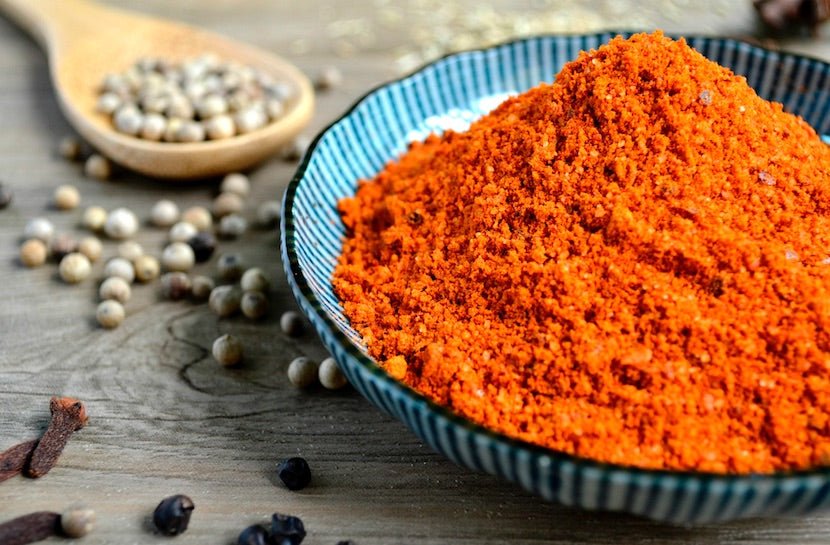Hello from India! I’ve been here just over a week, and now, even my east coast journey feels like a distant memory. I was in Bangalore until Friday evening, and now I am in the smoky mountains of Coimbatore! In this post, I’ll cover highlights from this past week, as well as share a delicious, traditional Indian Moringa soup recipe.
As an aside, it’s incredible how you can live your entire life knowing about something (in my case, eating it), but when it’s introduced in a different context, you don’t recognize it. There is a popular vegetable called Murungakka in Tamil. Both the pods and the leaves are used extensively in traditional South Indian cooking. Its pods is used in stews, and when it’s cooked, it has a tender inner flesh. I have eaten this vegetable my entire life (both the pods and the leaf). I’ve also read about the many health benefits of Moringa powder for years. But I did not realize until last week that the Tamil word Murungakka and the English word, Moringa, refer to the same plant! And, since I’ve had a fair amount of it this week, I decided to share a traditional South Indian Moringa Soup recipe at the end of this post.
But first, travel highlights! In case you’re new to Indian geography and culture, Bangalore is in the center of South India, and is the technology hub of India (basically, India’s Silicon Valley). It has an incredible range of things to do and sites to see, from nature parks and meditation centers to enormous shopping pavilions, crowded street markets, and high rises. Bangalore is generally very busy and crowded, and since I love nature and meditative activities, I spent a couple days at The Art of Living Center. This is the international headquarters of the Art of Living Foundation, an organization focused on various humanitarian efforts, with an emphasis on stress elimination. At the Bangalore Center, they have a large Ayurvedic (ancient Indian medicine) hospital and healing center.
The main building of the Art of Living Center in Bangalore, lit up at night!
The healing program is centered on Panchakarma- one of the most effective Ayurvedic modalities for detoxification and rejuvenation. Ayurveda states that toxic residues, called Ama, can build up in the body, and are the underlying cause of diseases. To reverse this, Panchakarma uses a combination of massages, special diet, herbal saunas, colon therapy, and gentle fasting. This process restores the body’s balance and natural vitality.
The main entrance to the Ayurvedic spa and healing center.
The healing center has a large garden with flowers, ponds, fruit trees, lawns, and forest areas for people to take walks, meditate, and just relax. The air was remarkably clean- a very welcome break from the pollution of urban Bangalore, and was profoundly conducive to meditation. This was definitely my happy place in Bangalore! Though I did not get a chance to do their full detox program (at least, as of yet), I did get to experience an Ayurvedic thali- a round platter with a variety of different dishes. Unlike regular thalis, it used minimal oil but lots of healing spices- a flavorful meal!
My Ayurvedic thali... Yum!
Outside of the healing center, there were many fruit stands, where I consumed many fresh coconuts (the stall owners give you straws to drink out of them, and then hack them open for you to eat the flesh) and mangoes, which are in season right now in India. The grounds at the Art of Living Center are littered with fruiting mango trees, and jackfruit trees with fruits twice the size of large babies. I wanted to climb them to pick my own, but I figured I’d get kicked out, so I stopped myself…
I had never seen a mango tree in real life! This is what it looks like.
I’ll be doing much more around Bangalore when I return after this week, but another amazing visit was the newly built Conrad Hotel. It is a gorgeous high-rise luxury hotel, with a blend of classic hotel architecture with Indian accents, and is magnificent. If you’re in Bangalore, it’s definitely worth a visit!
The Conrad Hotel, currently India's newest luxury hotel.
That’s all for this week’s highlights- though I will be posting a video on this with more footage and pictures as soon as I have reliable high-speed Internet access, so stay tuned to our YouTube channel! But, as promised, here’s your recipe!
You will need:
For the Pressure Cooker:
- ¾ cup dry pigeon peas
- 3 onions, chopped
- 5 standard tomatoes
- 1 tsp. cumin seeds
- 2 cloves garlic
Other Ingredients:
- 2 tbsp. sesame oil (preferred) or coconut oil
- ¼ tsp. fenugreek seeds
- ½ tsp. mustard seeds
- ¼ tsp. cumin seeds
- 2 tbsp. curry leaves (you can find these at Asian markets, but omit if you wish)
- ¼ tsp. asafoetida
- 1 tbsp. coriander powder
- 1 tsp. turmeric powder (available at Loose Leaf Tea Market)
- 3 Moringa stalks (available at Asian markets, and possibly other grocery stores)
- 1 tsp. tamarind paste
- 1 tbsp. salt
- ¼ cup cilantro
Cook ingredients from the pressure cooker list for 10 minutes (or until the pulses are soft) in a pressure cooker, on high. As this is cooking peel and chop the moringa stems.
Next, heat the sesame oil in a pan, and add in the mustard seeds, cumin seeds, fenugreek seeds and curry leaves until they crackle (temper the spices). Reduce the heat and add in the rest of the spices, with the onion. After 5-10 minutes, add the Moringa with some water. Next, add in the tamarind paste with salt, and let this cook until the Moringa is tender, but not overdone. Next, add the tomatoes and pigeon peas, and allow it to cook for at least 10 minutes. Taste it to check the spice level. When it is done, garnish with cilantro, and serve.










2 comments
Hi Kris! Sulinya can answer that better than I can, but I also do not have a pressure cooker, so anything with peas or beans needs to cook a lot longer. Add the other ingredients when the pulses are cooked.
The soup looks wonderful but not everyone has a pressure cooker. Can the recipe be modified for those who prefer to not use one? Thank you.